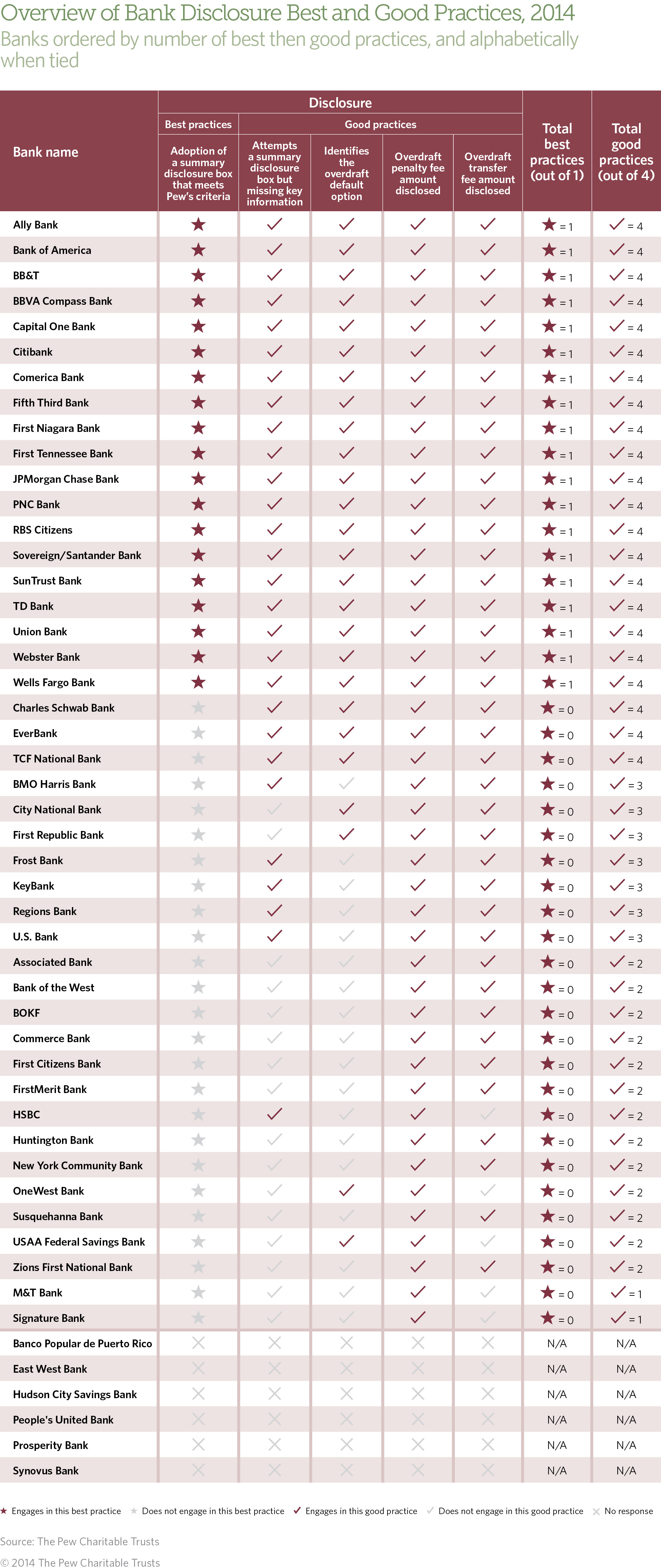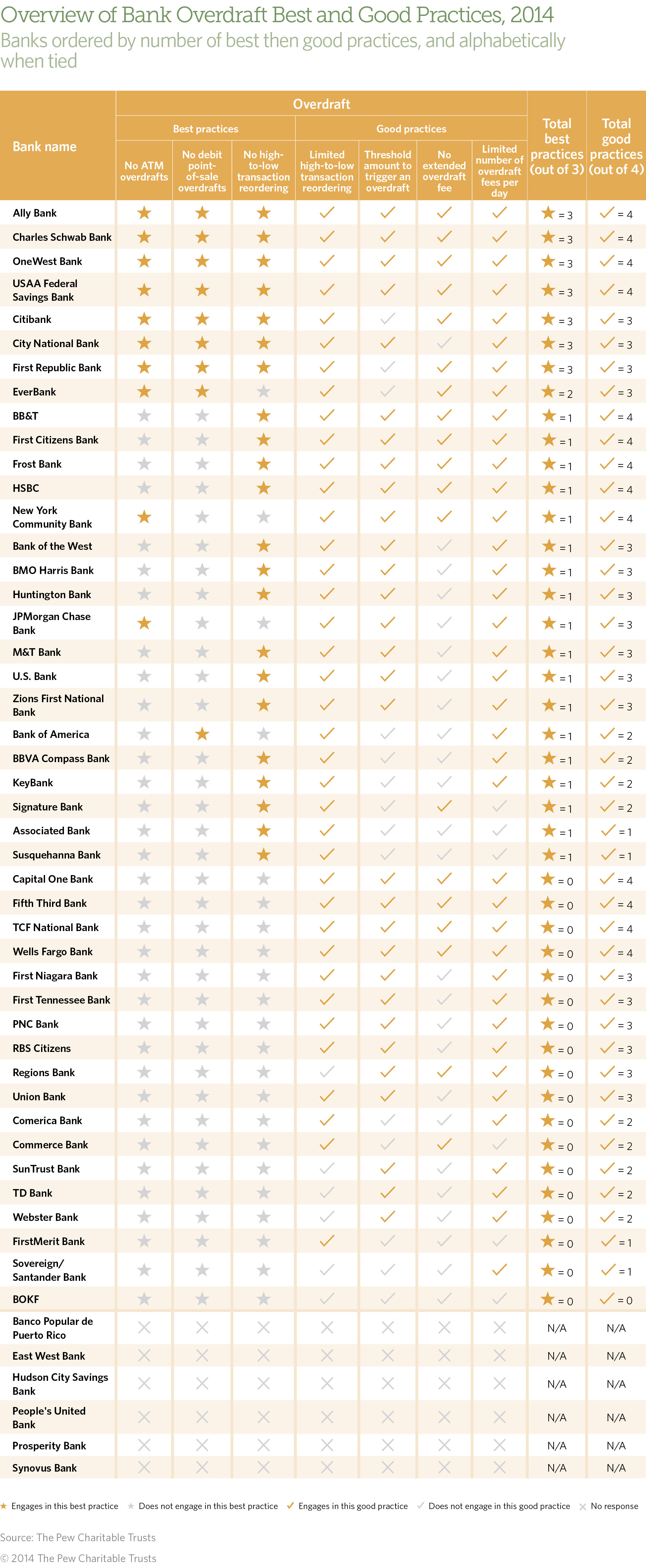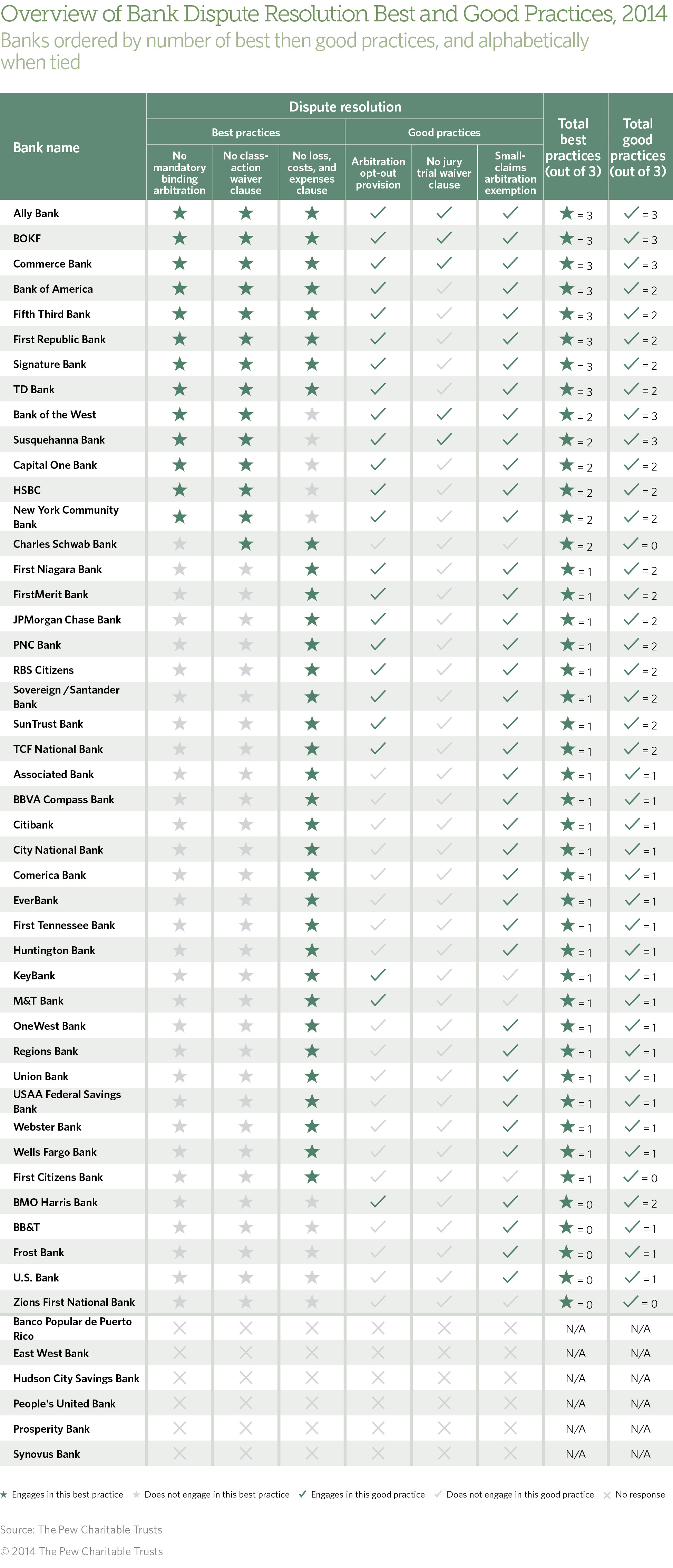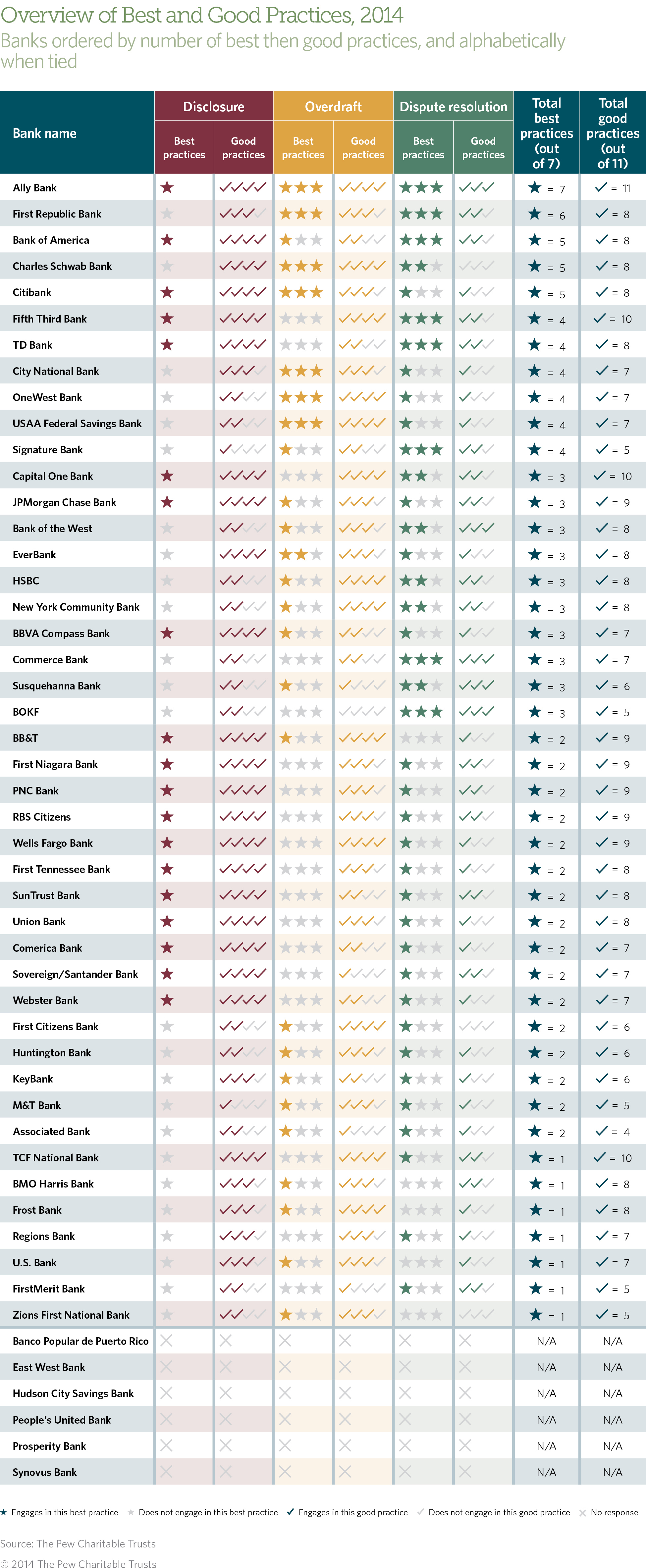Checks and Balances: 2014 Update
This report is the fourth in a series by The Pew Charitable Trusts examining key checking account terms and conditions. The good news for bank customers in 2014 is that disclosure policies have improved, especially those related to key terms, and there are greater overdraft protections at the ATM. Yet the bad news is that more banks are charging extended overdraft fees and limiting options for dispute resolution.
Overview
Checking accounts remain a fundamental financial product for consumers. Nine in 10 Americans have checking accounts and most rely on these accounts to make purchases, pay bills, withdraw cash, or deposit paychecks.1 Because checking accounts are an essential and widely used product, they need to be safe, fair, and transparent.
Unfortunately, the formal disclosure documents outlining these accounts' fees, terms, and conditions are often long, unintelligible, and opaque. Overdraft and transaction processing practices often result in surprise fees. And dispute resolution terms leave little room for consumers to choose how they want to proceed in the event of a problem.
The good news for bank customers in 2014 is that disclosure policies have improved, especially those related to key terms, and there are greater overdraft protections at the ATM. Yet the bad news is that more banks are charging extended overdraft fees and limiting options for dispute resolution.
These are the overarching findings of The Pew Charitable Trusts' fourth annual study of bank checking account disclosures.2 Our goal in this report, and the three previous ones, is to determine how consumers are affected by the terms and conditions of checking accounts.
We do this by reading and analyzing account agreements to determine bank policies and practices. We rely on these documents rather than contacting banks directly for this information because banks are legally required to accurately communicate these terms and conditions in writing to consumers. In addition, customers shopping for an account, whether online or in bank branches, would have to depend on these disclosures to choose a product or service that best meets their needs.
In our first study, released in 2011, we reported on the availability of important account information for the 10 largest financial institutions operating in the United States. In 2012, we used a similar format to study the top 12 financial institutions.
In 2013, we further expanded our scope to include 36 of the top 50 financial institutions (the other 14 did not provide Pew with account information when requested) and changed the format, adopting a rating system based on best and good practices—as derived from Pew's policy recommendations for checking account disclosure, overdraft, and dispute resolution policies.
This new report retains the rating system and evaluates the practices of 44 of the 50 largest retail banks that made their account information available. These institutions hold approximately 65 percent of all domestic deposits.
Like the 2013 report, Pew's Model Summary Disclosure Box for Checking Accounts (see page 6) served as the template for rating each bank's disclosure documents as a best or good disclosure practice. We used each bank's account agreement and other supplemental documents to determine whether the bank engaged in best or good practices for overdraft and dispute resolution.
Pew defines best practices as disclosed terms that are the most effective in:
-
Providing checking accountholders with clear and concise disclosure about fees and terms.
-
Reducing the incidence of overdrafts and eliminating practices that maximize overdraft fees.
-
Offering consumers a meaningful option to resolve a problem with their bank in court or by choosing arbitration rather than requiring consumers to agree before a dispute arises to go through the arbitration process.
Good practices are those described in bank disclosures that provide some protection to consumers in these areas but are not as expansive or effective as best practices. Depending on the practices and policies of each bank, it could be deemed to engage in both best and good practices in any of the three areas under review.
REPORT FIGURES










